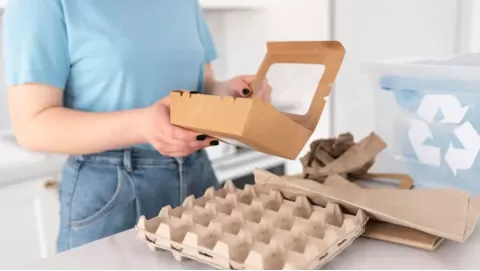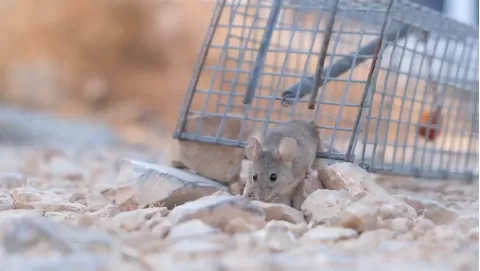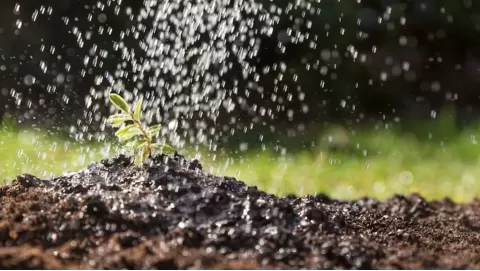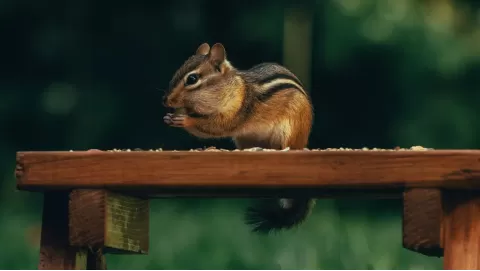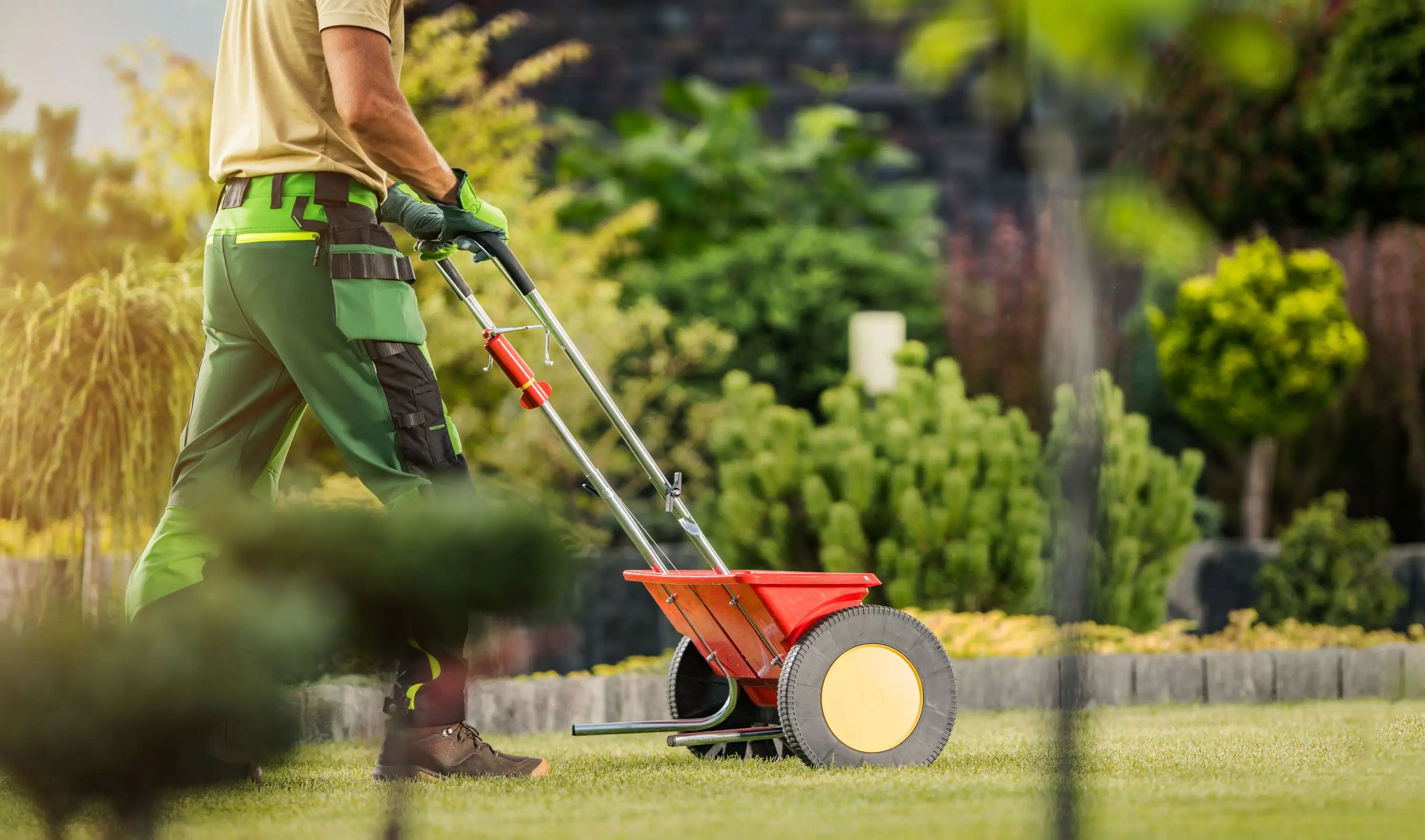
Choosing the best fertilizer spreader: A comprehensive guide
Lawn fertilizers make the lawn green and lush. They supply the soil with the key elements that healthy grass requires, potassium, phosphorus and nitrogen. Using fertilizer correctly means the lawn is getting the nutrients it needs to develop healthy roots, green leaves, and improved protection against pests and disease. Applying the best fertilizer for your lawn will transform your grass from a mere pedestrian field into a beautiful green oasis.
Fertilizer spreaders help you achieve desired results when you maintain a lawn. They make sure that nutrients are dispersed evenly over the lawn so you don’t get patchy growth and over-fertilize some areas. It can help you have a green and vibrant lawn at the same time, by saving money on fertilizers. Using a spreader will also reduce the amount of labor compared to using a shovel or trowel to apply fertilizer. This saves time, as there is no need to purchase and apply a balanced fertilizer, which would give nutrients to all areas of the lawn (for lush, vigorous growth). Whether you have a tiny backyard or a massive garden, a good fertilizer spreader can make lawn care a lot easier.
To make your lawn care easy and effective, you need to pick the right fertilizer spreader according to your needs. There are all sorts of types, all adjusted for different garden size and needs. Knowing your garden size, fertilizer type and needs will help you choose the right spreader for a green and healthy lawn.
Growcycle fertilizer spreaders offer the ultimate solution for gardeners, with amazing design and expert implementation. Favored for their durability and accuracy, these spreaders work in small urban gardens as well as on large lawns. An adjustable setting on the fertilizer spreaders allows you to give as much fertilizer as your garden needs and nothing more, ensuring that nothing is wasted and that all areas of plants receive the required nutrients.
The design is easy to use and reduces physical strain. Made from durable materials, Growcycle spreaders are routinely used and face demanding weather, making them an ideal option for anyone aiming for a healthy-looking green lawn that requires less effort.
Why Should Gardeners Use Fertilizer Spreaders?
Fertilizer spreaders are very useful tools which every gardener or owner needs to have to achieve an eye-pleasing lawn/garden. One of the top benefits of fertilisation application is to use a spreader with better spread of nutrition. If fertilizer is applied incorrectly, the fertilizer will concentrate in some areas, but not others, resulting in patchy growth and even damaging the plant.
In addition, a spreader makes everything quicker and easier. It may be propagated by hand, but this is slow and impractical. This is where it’s giving people the battle of time for other gardening jobs, it also ensures that the work is done precisely and quickly.
Furthermore, spreaders also fulfill a waste disposal function, placing fertilizer only where it is needed and thereby preventing over-application and unwanted nutrient run-off into surrounding non-soil areas.
As well as this the lower fertilizer quantity is also a huge bonus. Most spreaders have adjustments that allow gardeners to vary the amount of fertilizer released for each garden. It manages the nutrients offered to plants for optimum efficiency.
Types of Fertilizer Spreaders
Once you have the fertilizer, lawn and field fertilizer spreaders are great implements to distribute the fertilizer evenly on the surface area. There are different types that can be customized to fit particular requirements.
1. Broadcast Spreaders
Broadcast spreaders feature a container and spinning disk that flings fertilizer over a large area. These include everything from small area push models to tow-behind models for larger area applications. They are good for larger areas, plus they distribute grass seed. They are, however, less precise and may also spread fertilizer unevenly.
2. Drop Spreaders
Drop spreaders have a series of holes below the container that drops fertilizer directly on the soil, providing methodical and controlled application. They are well suited to small yards and gardens, since they apply fertilizer evenly and help avoid it falling on sidewalks or driveways. They are also more time-consuming than broadcast spreaders since they take more passes, due to their relatively small application area.
3. Handheld Spreaders
Handheld spreaders are small, portable devices that are spread using a crank or powered by a battery. They’re sweet to use in small space,s so would be great for spot treatments and probably travel well. Still, they were semi-effective once, although they are not quite as capable across extensive areas as more modernized equipment and inch towards tediousness with constant refilling.
How to Choose the Right Fertilizer Spreader?
If you’re lawn or garden is small, look for a handheld spreader; this will provide you access and accuracy in smaller areas. Broadcast spreaders are suitable for medium to large lawns and will distribute fertilizer quickly and efficiently across a wide area. Drop spreaders are very accurate, putting down fertilizer directly beneath the spreader, so they are perfect if you need to accurately distribute along borders or paths. Tow-behind spreaders that connect to a lawn tractor or ATV save effort and time for big lawns.
Here are some considerations that gardeners should examine when choosing the best fertilizer spreader:
1. Assess the Garden Size and Layout
Begin with the dimension and shape of the courtyard or lawn. A handheld spreader works well for small urban gardens or lawns and allows for more precision if you need to fit into tight spaces. If you have a larger (think garden or lawn-sized) area to cover, grab yourself a broadcast spreader.
2. Consider the Type of Fertilizer
Some fertilizers work better with certain types of spreaders. Ensure the spreader is appropriate for the type of fertilizer being applied. Some work better for granular fertilizers, while others work better with powder or liquid types. Selecting a spreader that correlates with the type of fertilizer used will yield improved results and help you have a healthier plant.
3. Evaluate Precision and Control Features
You want to spot treat your plants and not over-fertilize your garden. Make sure you choose a spreader that has adjustable settings for the amount of fertilizer it sends out per square footage.
If you only want to fertilize a specific area, a drop spreader allows you to apply fertilizers wherever they are required.
4. Check Durability and Build Quality
A high-quality fertilizer spreader should be well built and be capable of withstanding weather and continuous employment. Take note of what the spreader is made of: Metal or plastic parts of higher quality should last longer.
5. Ease of Use and Maintenance
Ease of use is essential. Look for ergonomic handles, easily navigable controls for changing settings, and clear displays for the flow rate, among other features. And these help and improve the efficiency of the fertilization operations, which, you know, can be surprisingly nice. And think about how easy the spreader will be to maintain and clean.
6. Consider the Budget
While searching for fertilizer spreaders, be sure to recall the budget. There may be a temptation to simply go with the cheapest spreader you can find, but a quality spreader will save you cash in the long term. A quality spreader minimizes fertilizer waste and achieves uniform coverage, ultimately making you money.
How to Use a Fertilizer Spreader?
Use a fertilizer spreader properly to ensure the garden or lawn receives the most nutrients. Start by consulting the manufacturer’s guide for that particular model.
- The spreader should be set up and adjusted according to these directions for its best performance.
- Begin by filling the hopper with the recommended amount of fertilizer. Adjust the settings to achieve the desired application rate. When using broadcast spreaders, begin at one end of the area and move straight ahead, slightly overlapping each pass to provide uniform coverage. For drop spreaders, walk in parallel rows, avoiding gaps or overlaps.
- Maintaining a consistent walking pace is essential to ensuring uniform distribution. Additionally, avoid sudden stops and sharp turns, which can result in uneven application.
- After using fertilizer, be sure to thoroughly clean the spreader to avoid clogs and corrosion. With proper maintenance, you can ensure that the spreader will remain functional for a longer period.
Top 5 Fertilizer Spreaders
Choosing the right fertilizer spreader can make a big difference in maintaining a healthy lawn or garden. Here are the top 5 fertilizer spreaders that stand out for their efficiency, ease of use, and reliability:
1. Lesco Commercial Spreader
The Lesco Commercial Spreader is widely regarded as one of the top choices for both professional landscapers and serious gardeners. Known for its durability and precision, this spreader is equipped with a high-capacity hopper that can hold substantial amounts of fertilizer, ensuring fewer refills and more efficient ground coverage. Even on uneven terrain, the large pneumatic tires and stainless-steel frame provide stability and simplicity of maneuvering.
Its adjustable settings allow for precise control over the application rate, making it versatile enough to handle various types of fertilizers and seeds. The Lesco Commercial Spreader's robust construction ensures long-term reliability, while its ergonomic design makes it easy to use, making it a worthwhile investment for maintaining large lawns and gardens.
2. Earthway Fertilizer Spreader
The Earthway Fertilizer Spreader is a popular choice among hobbyists and professional landscapers thanks to its affordability and functionality. Featuring a durable poly hopper and heavy-duty frame, this spreader is designed to withstand regular use and harsh weather conditions. It is equipped with pneumatic tires, which ensure smooth operation and easy maneuverability across different types of terrain.
The Earthway Spreader also boasts adjustable settings that allow for precise control over the spread rate, making it suitable for a wide range of fertilizers and seeds. Its ergonomic handle and user-friendly design make it a convenient tool for achieving even and efficient coverage, enhancing the health and beauty of any lawn or garden.
3. Jonathan Green Spreader
The Jonathan Green Spreader is a top choice for anyone looking for a reliable tool for lawn care. Built with a solid poly hopper, it doesn't rust or wear out quickly, making it last for many seasons. The large pneumatic tires offer excellent traction and smooth movement, even on rough or soft ground.
Adjustable settings help control the flow rate, making sure the right amount of fertilizer or seed is applied to a healthy lawn. Its ergonomic handle and easy-to-use calibration make it simple to operate and great for both beginners and experienced gardeners. Combining durability with ease of use, the Jonathan Green Spreader is a valuable addition to any lawn care toolkit.
4. McDonald Manure Spreader
The McDonald Manure Spreader stands out as a robust and efficient option for those handling organic fertilizers. Built with a heavy-duty steel frame and galvanized hopper, it is designed to handle the toughest jobs and resist corrosion over time. Its large capacity allows for fewer trips across the field, making the task more time-efficient.
The spreader's wide wheels ensure stability and smooth operation, even in muddy or uneven conditions. Adjustable flow settings provide precision, enabling users to apply the right amount of manure to enhance soil fertility. Ideal for both small farms and large agricultural operations, the McDonald Manure Spreader combines durability with practical functionality, ensuring even distribution and promoting healthier plant growth.
5. Chapin Hand Crank Fertilizer Spreader
The Chapin Hand Crank Fertilizer Spreader is an excellent option for those seeking a compact and easy-to-use spreader for smaller areas or targeted applications. Featuring a lightweight design and a durable poly hopper, this handheld spreader is built for convenience and reliability. The ergonomic hand crank allows for precise control over the spreading process, making it simple to adjust the flow rate for different types of fertilizers and seeds.
Its portability makes it ideal for maneuvering around tight spaces, garden beds, or hard-to-reach areas where larger spreaders might struggle. The Chapin Hand Crank Fertilizer Spreader is perfect for hobby gardeners and small-scale landscapers, ensuring accurate and efficient fertilizing with minimal effort.
Benefits of Using Spreader for Fertilizers
There are various advantages of spreaders for fertilizers that can improve the quality of your garden or lawn. Here are some key advantages:
- Even Distribution
A spreader distributes fertilizer evenly. Hand spreading can result in uneven patches that lead to growth and burn spots in a lawn or garden. Spreader helps in even distribution of fertilizer, which promotes balanced nutrition absorption and healthy green growth.
- Efficiency and Speed
A spreader makes fertilizing easy and quick. Spreaders available are much faster and involve less work. They work well in small flowerbeds and large carpets of lawn. Spreaders are time savers that also eliminate much manual effort, so gardening and landscaping is more enjoyable.
- Precision Application
Spreaders determine how much fertilizer is applied. That avoids over-fertilization, which can damage plants and contribute to pollution. Most spreaders have adjustable settings, which ensure you’re using the right amount of fertilizer and seeds for the job.
- Versatility
Earth and rock garden spreaders do more than just apply fertilizer. Use them to broadcast seeds, lime, sand, and ice melt. They also do other lawn care products. That all-purpose use makes spreaders a smart purchase for any gardener or landscaper. They are practical all year round.
- Cost Effectiveness
A spreader ultimately saves you money. It guarantees that fertilizers are distributed uniformly and that they perform effectively, stopping waste from over-utilizing or abandoning spots. This yields better returns on lawn care products.
- Improved Lawn Health
Proper and regular fertilization makes a lawn or garden appear better and maintains its health. Spreaders ensure nutrients are evenly distributed across a lawn. This results in more even growth, greener grass, and more robust plants. The healthier lawn is more attractive and better able to resist weeds, pests, and disease.
Useful Tips for Efficient Coverage
A fertilizer spreader will do such an efficient coverage that the grass or the garden will have proper nutrients dispersed in them at regular intervals. To yield optimal results, here are some tips:
1. Preparing the Spreader
Clean the spreader before using it. Remove any old material that could be inside. In this way, there is no risk of contamination; no error. Check the tire pressure. Inspect all moving parts. Ensure all dynamics function correctly.
2. Calibration
Calibration of the spreader should be according to the requirements of the manufacturer. It is a critical step in making sure the right amount of fertilizer is applied. Test on a small area first with the spreader. Make changes as needed in the settings. That way, you hit every bare foot without wasting any fertilizer in the process.
3. Choosing the Right Time
Fertilizer should be applied on a calm day. It keeps wind from swirling around. This is to be done either in the early morning or in the late evening. These conditions let the fertilizer penetrate the soil deeply and reduce the possibility that it will turn to vapor.
4. Steady Pace
Set a steady walking pace as you walk with the spreader. It allows the spreading of fertilizers evenly without missing any area of the field. Do not start and stop suddenly. They result in uneven application and over-fertilization in certain areas.
5. Avoiding Over Fertilization
For example, when paths cross, do not saturate an area twice with fertilizer. Overfertilization can harm plants and allow nutrients to leach into water supplies. Just be sure to pay attention to the spreader so you don’t deposit too much fertilizer in one place.
6. Cleaning After Use
After you fertilize, clean out the spreader really well, including disposing of any leftover material. This keeps rust at bay and ensures the spreader is ready for next time. With constant cleaning and proper maintenance, the spreader can live long and work more efficiently.
7. Storage of the Spreader
Store the spreader in a dry location free from rain and moisture. The best means is to cover it so that dust does not accumulate and parts do not rust. Maintaining the spreader means keeping it in good condition for the next use by proper storage.
8. Regular Maintenance
Lubricate the moving parts of the spreader regularly, and check for signs of wear and tear; replace any worn parts as soon as possible. Ensuring you really extend the overall longevity and performance of the tool. A properly looked-after spreader will continue to spread correctly, and this is another function of maintenance.
Common Mistakes to Avoid
However, if you don’t calibrate the spreader, application can be uneven, with some areas receiving too much fertilizer and others too little. However, ensure that you calibrate before use, per the manufacturer's instructions.
One more mistake is not to check the quality and durability of the spreader. While it can be tempting to simply pick the lowest-priced option, a higher-quality spreader can actually save you money in the long run with the performance and durability of a better-quality spreader.
Do not underestimate the need for adjustable settings. The flow and spreader pattern is adjustable for the gardener to apply the fertilizer for best results, accurately and efficiently.
FAQs
Can I use a fertilizer spreader for other materials?
Yes, most fertilizer spreaders are also used to spread seed, lime, or other types of granular products. Make sure to clean the spreader well between uses to avoid cross-contamination.
How often should I clean my fertilizer spreader?
The spreader needs to be cleaned after each use to prevent corrosion and clogging. Wash the hopper and all moving parts with water, then let the spreader dry thoroughly before storing.
When is the best time to apply fertilizer?
Adding nutrients to plants is most beneficial during the growing season when plants actively uptake nutrients, so that is the best time to apply fertilizer. Refrain from fertilising on rainy days or windy days, causing uneven application and run-off.
The Bottom Line
Fertilizer spreaders are used to keep plants and lawns looking good and growing healthy. This ensures even application of nutrients, saves time and energy, and reduces waste. This guide on fertilizer spreader types, uses, and selection will help you make gardening fun and easy to handle. Whether you’re a seasoned gardener or beginning to dig, a good quality spreader will help keep your verdant, colorful landscape growing.
Growcycle has the best fertilizer spreaders available that could meet different landscaping and gardening needs. All of these distributors are manufactured with some of the high-grade materials available, utilizing the latest manufacturing methods to guarantee a service life.
With the ability to calibrate and adjust for accurate fertilizer application, Growcycle spreaders are suited to tailor crop needs. Depending on the size of your garden and the type of fertilizer you're using, there are models of spreaders available that will help you with the correct method of fertilization.
Disclaimer: This material is for informational purposes only and should not be relied on for legal, medical, financial, or any other form of professional advice.






